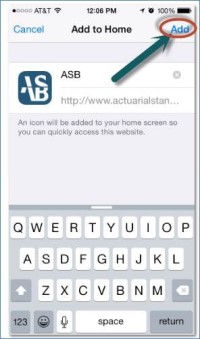As any actuary with a long career can tell you, at some point you will face a new professional situation and wonder whether you are really qualified to provide the actuarial services requested. Situations such as a new area of practice, a new area of business, a new set of laws and regulations, or a client with a new business model can be exhilarating—and may be intimidating as well. So, what does it mean, under these circumstances, to “look in the mirror” and satisfy yourself and other members of the actuarial profession that you have complied with the obligation to be qualified under Precept 2 of the Code of Professional Conduct?
The “look in the mirror” test requires you to objectively examine your professional qualifications—basic and continuing education (CE), and experience—and make a reasoned judgment about whether you can fulfill your obligations under the Code to “act honestly, with integrity and competence” and to “perform Actuarial Services with skill and care” (Precept 1) and to “per-form Actuarial Services only when … qualified to do so on the basis of basic and continuing education and experience, and only when [you satisfy] applicable qualification standards” (Precept 2). Annotation 2-2 extends this bedrock principle, stating that “[t]he absence of applicable qualification standards for a particular type of assignment … does not relieve the Actuary of the responsibility to perform such Actuarial Services only when qualified to do so…” [emphasis added]. In other words, the Code expressly states that, even in situations where objective measures of qualification do not exist, the obligation to protect the public and the reputation of the profession requires you to achieve a level of competence that allows you to render actuarial services with skill and care.
Just as the “look in the mirror” test must be anchored in the Code, it should be performed with the requirements of the Qualification Standards for Actuaries Issuing Statements of Actuarial Opinion in the United States (U.S. Qualification Standards, or USQS) firmly in mind. The USQS defines the requirements for basic education and experience and CE articulated in Precept 2 of the Code. The USQS also recognizes the dynamic situations in which you may find yourself, stating that “[a]ctuarial practice is grounded in the knowledge and application of actuarial science, a constantly evolving discipline. If actuaries are to provide their Principals with high-quality service, it is important that they remain current on emerging advancements in actuarial practice and science that are relevant to the Actuarial Services they provide. Further, opportunities to practice are expanding beyond traditional work. … Actuaries working in emerging areas need to be familiar with relevant new techniques and concepts from other related disciplines” (section 2.2.1). To help you navigate such new and complex situations, the USQS provides guidance on statements of actuarial opinion issued in more than one area of actual practice (section 2.3), changes in areas of actuarial practice (section 4.1), changes in applications of actuarial science (section 4.2), and emerging or nontraditional areas of actuarial practice (section 4.3). These USQS provisions and the answers to frequently asked questions on the USQS (the FAQs) are a good place to start any “look in the mirror” analysis.
To satisfy the USQS, your CE must be relevant to your work. For the General Qualification Standard, CE is “relevant” if it broadens or deepens understanding of one or more aspects of your work, expands your knowledge of practice in related disciplines that bear directly on the work, or facilitates your entry into a new area of practice (section 2.2.7). Under the Specific Qualification Standards, CE must be “directly relevant” to the topics listed in section 3.1.1 so that you “maintain current knowledge of applicable standards and principles in the area of actuarial practice of the Statement of Actuarial Opinion” (section 3.3). When doing a “look in the mirror test,” you need to take this concept of relevance seriously, because “[u]ltimately, it is an actuary’s responsibility to make a reasonable, good-faith determination of what continuing education opportunities will enhance an actuary’s ability to practice in a desired field” (section 2.2.7). In other words, when you look in the mirror, just “checking the box” is not enough; you need to do some fact-checking and soul-searching.
When undertaking a “look in the mirror” test, talking to actu-aries practicing in the area can help you determine whether you are qualified, and if not, what you need to do to become qualified. The USQS also invites more formal consultation on individual qualifications. Section 1.5 (Periodic Assessment) states that “Actuaries should regularly review their qualifications and may contact the Committee on Qualifications (COQ) or the Actuarial Board for Counseling and Discipline (ABCD) for guidance to address specific questions and concerns.” The COQ and ABCD are excellent and easily accessible sources of advice on professional qualifications. The look in the mirror need not be a lonely undertaking.
The context in which you undertake a “look in the mirror” test of your qualifications—the context provided by the fundamental obligations of the Code, the rubric of the USQS, and the supportive institutions of actuarial professionalism—means that the test is not purely subjective. A subjective test would be inconsistent with the high bar for professional qualifications set out in the Code and the requirements of the USQS. You must “be prepared to provide evidence of compliance with the Qualification Standards” (section 6.2). So, when you look in the mirror, you should first consult the USQS, the FAQs, qualified colleagues, and professionalism experts and then look at your achievements in basic education and experience and CE. If you do so and make a reasoned judgment based on what you see, you can be proud of the professional looking back, even if you decide you are not qualified.
(Featured in the April 2016 Actuarial Update.)




